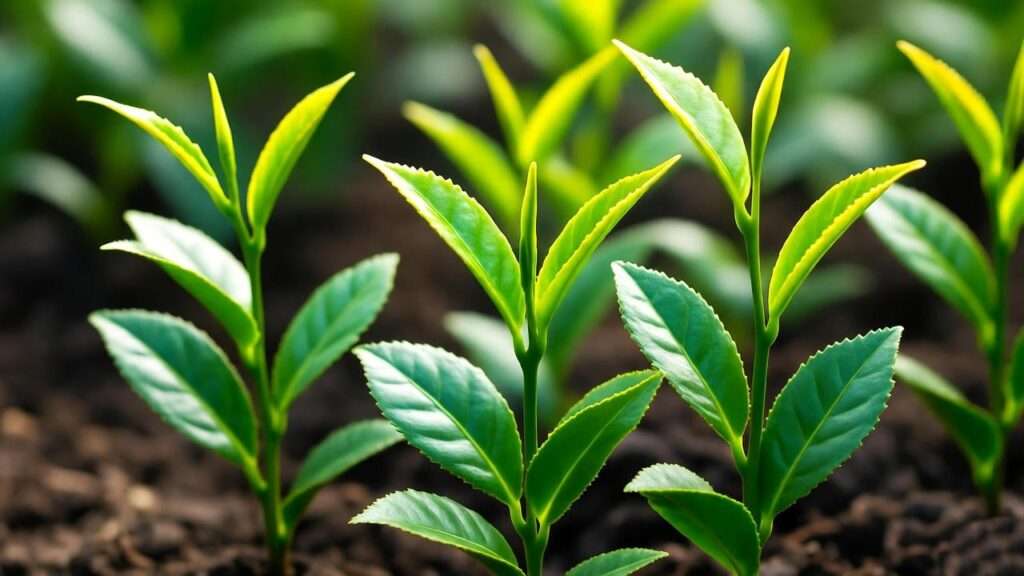Imagine sipping a cup of tea made from leaves you grew yourself, nurtured from tiny tea plant seedlings into a thriving Camellia sinensis shrub. The journey to homegrown tea is not only rewarding but also surprisingly achievable with the right knowledge. Whether you’re a plant enthusiast or a tea lover, growing tea plant seedlings at home lets you connect with nature and enjoy the fruits of your labor. In this comprehensive guide, I’ll share expert-backed tips to help you select, plant, and care for tea plant seedlings, ensuring they thrive in your garden or home. With over a decade of experience in horticulture and a passion for sustainable plant care, I’ve cultivated tea plants successfully in various climates. Let’s dive into everything you need to know to grow healthy, vibrant tea plant seedlings and start your tea-growing adventure! 🌿
H2: Understanding Tea Plant Seedlings: The Basics of Camellia Sinensis 🌿
H3: What Are Tea Plant Seedlings?
Tea plant seedlings are young Camellia sinensis plants, the foundation of all true teas, including green, black, white, and oolong. These evergreen shrubs are prized for their glossy leaves, which are harvested to produce tea. There are two primary varieties: Camellia sinensis var. sinensis, ideal for cooler climates and known for delicate flavors, and Camellia sinensis var. assamica, suited for warmer regions with bolder tea profiles. Growing tea at home is sustainable, cost-effective, and deeply satisfying, as it allows you to control the quality of your tea from seedling to cup. Plus, tea plants add aesthetic beauty to gardens with their lush foliage and small, fragrant flowers. 🌸
H3: Ideal Growing Conditions for Tea Plant Seedlings ☀️
To thrive, tea plant seedlings need specific conditions mimicking their native environments in Asia. Here’s what they require:
- Climate: Tea plants flourish in USDA hardiness zones 7–9, where temperatures range from 20°F to 85°F. In colder regions, indoor growing with grow lights and humidity control is a viable option.
- Soil: Tea plants prefer well-draining, acidic soil with a pH of 4.5–6.0. A mix of peat moss, perlite, and compost works well to maintain acidity and drainage.
- Light: Partial shade is ideal, with 4–6 hours of filtered sunlight daily. Avoid harsh, direct sun to prevent leaf scorch.
- Water: Keep soil consistently moist but not waterlogged. Overwatering can lead to root rot, a common issue for beginners.
By replicating these conditions, you set the stage for robust tea plant growth. For indoor growers, a south-facing window or LED grow lights can mimic natural sunlight effectively.
H2: Choosing the Right Tea Plant Seedlings 🛒
H3: Where to Source Quality Seedlings 🌱
Selecting healthy tea plant seedlings is critical for success. Purchase from reputable nurseries, such as online suppliers like Logee’s Plants or local garden centers specializing in rare plants. Look for seedlings with vibrant green leaves, sturdy stems, and no signs of pests or yellowing. Avoid plants with wilted foliage or compacted roots, as these may struggle to establish. Starting from seeds is an option, but it’s time-consuming and less predictable—seedlings offer a faster, more reliable path to homegrown tea. Always check reviews and ask nurseries about their cultivation practices to ensure quality.
H3: Selecting the Best Tea Plant Variety for Your Needs 🍃
Choosing the right variety depends on your climate, space, and tea preferences. Camellia sinensis var. sinensis is compact, cold-hardy, and perfect for small gardens or indoor setups in cooler climates. Camellia sinensis var. assamica grows larger and thrives in warmer, humid conditions, making it ideal for tropical regions. If you’re aiming for green tea, opt for sinensis; for bold black teas, assamica is a better fit. Consider your growing zone and space constraints—sinensis stays under 6 feet, while assamica can reach 15 feet if unpruned. Expert Tip: Consult your local cooperative extension service to confirm the best variety for your region.
H2: Step-by-Step Guide to Planting Tea Plant Seedlings 🌍
H3: Preparing the Planting Site 🕳️
Proper site preparation is key to healthy tea plant seedlings. For outdoor planting, choose a location with well-draining soil and partial shade, ideally near taller plants that provide natural cover. Test soil pH and amend with sulfur or organic matter like pine bark to achieve the ideal 4.5–6.0 range. For indoor growing, select a 12–16-inch pot with drainage holes and fill it with an acidic potting mix. If using grow lights, position them 12–18 inches above the seedling to mimic natural light. Clear debris and weeds from the site to reduce competition for nutrients.
H3: Planting Techniques for Success 🌱
Follow these steps to plant tea seedlings correctly:
- Dig the Hole or Prepare the Pot: For outdoor planting, dig a hole twice the width and depth of the root ball. For pots, ensure the container is large enough to accommodate root growth.
- Position the Seedling: Place the seedling in the hole or pot, ensuring the root crown sits at soil level. Spread roots gently to encourage outward growth.
- Backfill and Water: Fill with soil, pressing lightly to eliminate air pockets. Water thoroughly to settle the soil.
- Mulch: Apply a 2-inch layer of organic mulch (e.g., pine bark or wood chips) to retain moisture and regulate soil temperature.
Common Mistakes to Avoid: Planting too deep can suffocate roots, while overwatering can cause rot. Check soil moisture daily for the first two weeks to establish a routine.
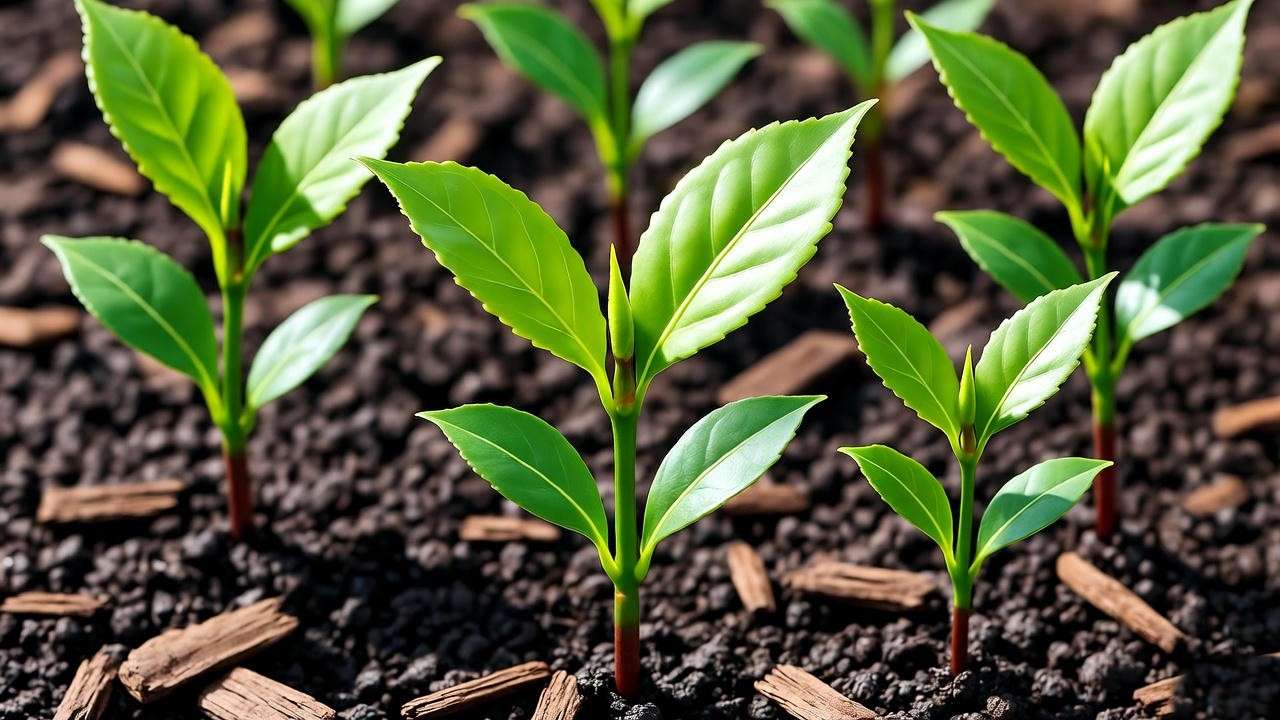
H2: Nurturing Your Tea Plant Seedlings: Care and Maintenance 🧑🌾
H3: Watering and Feeding Your Seedlings 💧
Tea plant seedlings need consistent moisture to thrive. Water when the top inch of soil feels dry, typically every 2–3 days for outdoor plants and slightly less for indoor ones. Use rainwater or distilled water to avoid alkaline tap water, which can raise soil pH. Fertilize monthly during the growing season (spring to early fall) with an acidic fertilizer, such as one designed for azaleas or rhododendrons (e.g., 10-5-4 NPK). Organic options like compost tea or fish emulsion are excellent for eco-conscious growers. Avoid over-fertilizing, as it can burn tender roots.
H3: Pruning and Shaping for Healthy Growth ✂️
Pruning encourages bushy growth and maximizes leaf production. In early spring, trim back weak or leggy branches using clean, sharp shears. For young seedlings, focus on removing dead or damaged growth to promote vigor. As the plant matures, shape it into a compact bush by cutting back the top growth to 2–3 feet. Expert Insight: Tea farmers in Darjeeling recommend pruning after the first flush (spring growth) to stimulate new shoots, which produce the best tea leaves. Always sterilize tools to prevent disease spread.
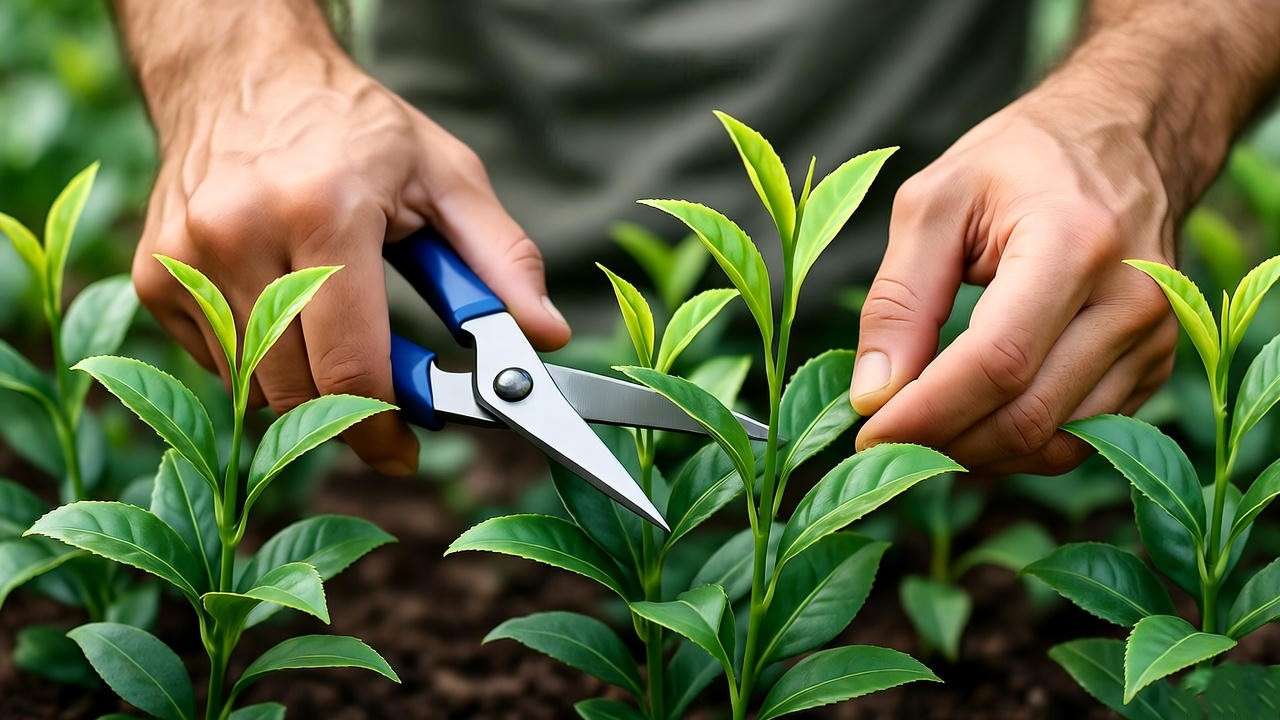
H3: Protecting Seedlings from Pests and Diseases 🐞
Tea plant seedlings are susceptible to pests like spider mites, and scale insects. Inspect leaves weekly and use organic solutions like neem oil or insecticidal soap for control. Companion planting with marigolds or garlic can deter pests naturally. Common diseases include root rot (caused by overwatering) and leaf spot (from poor airflow). Prevent these by ensuring proper drainage, spacing plants 3–4 feet apart, and removing affected leaves promptly. Pro Tip: Maintain good air circulation by avoiding overcrowding, especially for indoor plants.
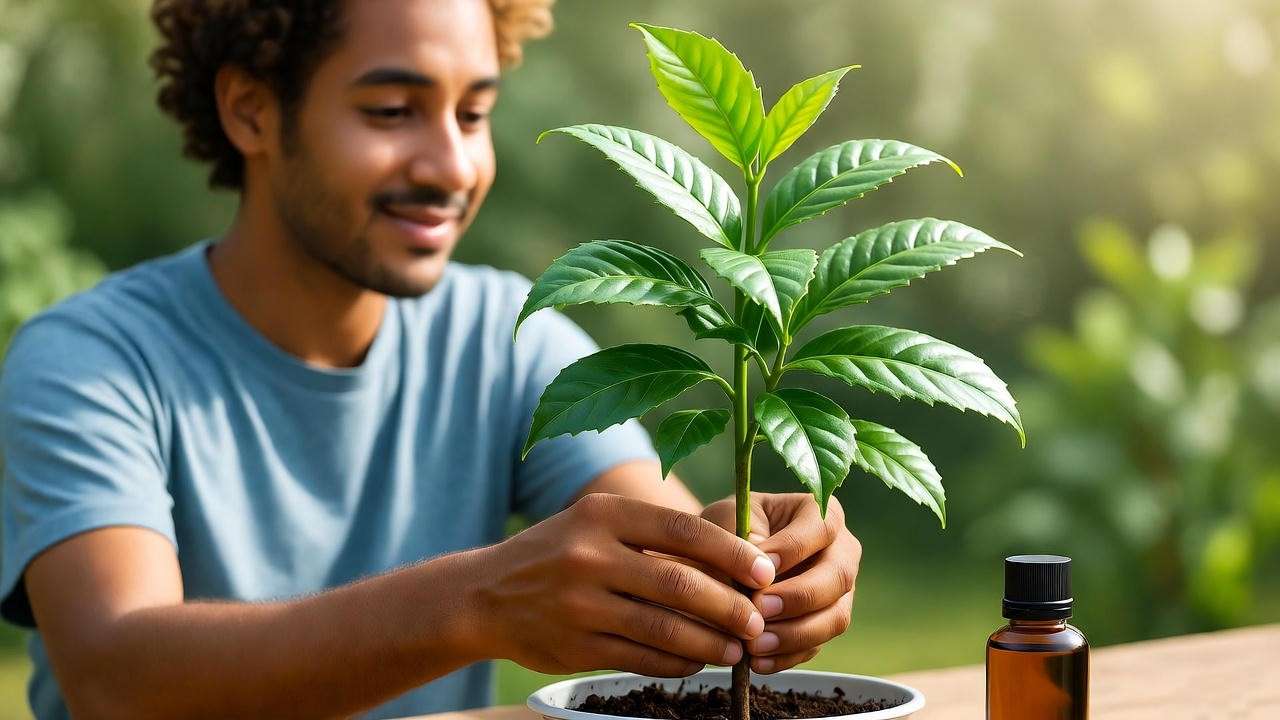
H2: Troubleshooting Common Tea Plant Seedling Problems ⚠️
H3: Why Are My Seedlings Wilting or Yellowing? 🥀
Wilting or yellowing tea plant seedlings can be distressing, but the causes are often fixable with prompt action. Common culprits include:
- Overwatering: Excess water leads to root rot, causing leaves to droop or yellow. Check soil moisture; it should feel like a wrung-out sponge.
- Nutrient Deficiency: Lack of nitrogen or iron can cause yellowing. Test soil and apply an acidic fertilizer if needed.
- Poor Light: Insufficient light weakens seedlings, leading to wilting. Ensure 4–6 hours of filtered sunlight or use grow lights for indoor plants.
Solutions: Adjust watering to maintain consistent moisture without sogginess. Improve drainage by adding perlite to the soil mix. Relocate plants to a brighter spot or supplement with LED grow lights (6500K spectrum). Case Study: A home grower in Seattle revived wilting seedlings by reducing watering frequency and moving them to a south-facing window, resulting in new growth within two weeks.
H3: Slow Growth or No New Leaves? 📉
If your tea plant seedlings are growing slowly or not producing new leaves, consider these factors:
- Inadequate Light: Tea plants need partial shade but still require sufficient light for photosynthesis. Too much shade stunts growth.
- Incorrect Soil pH: A pH above 6.0 hinders nutrient uptake. Test soil with a pH meter and amend with sulfur if too alkaline.
- Nutrient Imbalance: Lack of balanced fertilizer can slow development. Use a slow-release, acidic fertilizer to provide steady nutrients.
Fixes: Move plants to a spot with filtered sunlight or adjust grow lights to 12–18 inches above the canopy. Lower soil pH with organic amendments like pine bark. Apply a balanced fertilizer (10-10-10 or similar) every 4–6 weeks during the growing season. Pro Tip: Keep a growth journal to track light, water, and fertilizer changes, helping you identify patterns and address issues early.
H2: Harvesting and Using Your Tea Plant Leaves 🍵
H3: When and How to Harvest Tea Leaves 🌿
Tea plant seedlings typically take 2–3 years to produce harvestable leaves, as they need time to establish a strong root system and ample foliage. Harvest in spring when new shoots (called flushes) emerge, as these young leaves yield the best flavor. To harvest:
- Select Young Leaves: Pick the top two leaves and the bud (the “flush”) from each stem. These are tender and flavorful.
- Use Clean Tools: Use clean scissors or pinch leaves by hand to avoid damaging the plant.
- Harvest Sparingly: For young plants, take only 10–15% of the foliage to avoid stress.
Harvest every 1–2 weeks during the growing season (spring to early summer) to encourage new growth. Avoid harvesting in late fall or winter, as the plant needs energy to overwinter.
H3: Processing Homegrown Tea Leaves at Home 🏠
Processing tea leaves at home is a rewarding way to enjoy your harvest. Here’s a simplified method for beginners to make green tea:
- Withering: Spread freshly picked leaves on a clean tray in a shaded, airy spot for 4–6 hours to reduce moisture.
- Pan-Firing: Heat leaves in a dry skillet over medium heat for 2–3 minutes to halt oxidation, preserving the green color.
- Rolling: Gently roll leaves by hand to release flavors and shape them.
- Drying: Dry leaves in an oven at 200°F for 10–15 minutes or air-dry for 1–2 days until crisp.
For black tea, allow leaves to oxidize for 12–24 hours after withering before drying. Safety Note: Ensure leaves are fully dried to prevent mold. Store in airtight containers away from light and moisture. Beginners can start with green tea, as it requires minimal equipment and processing time.
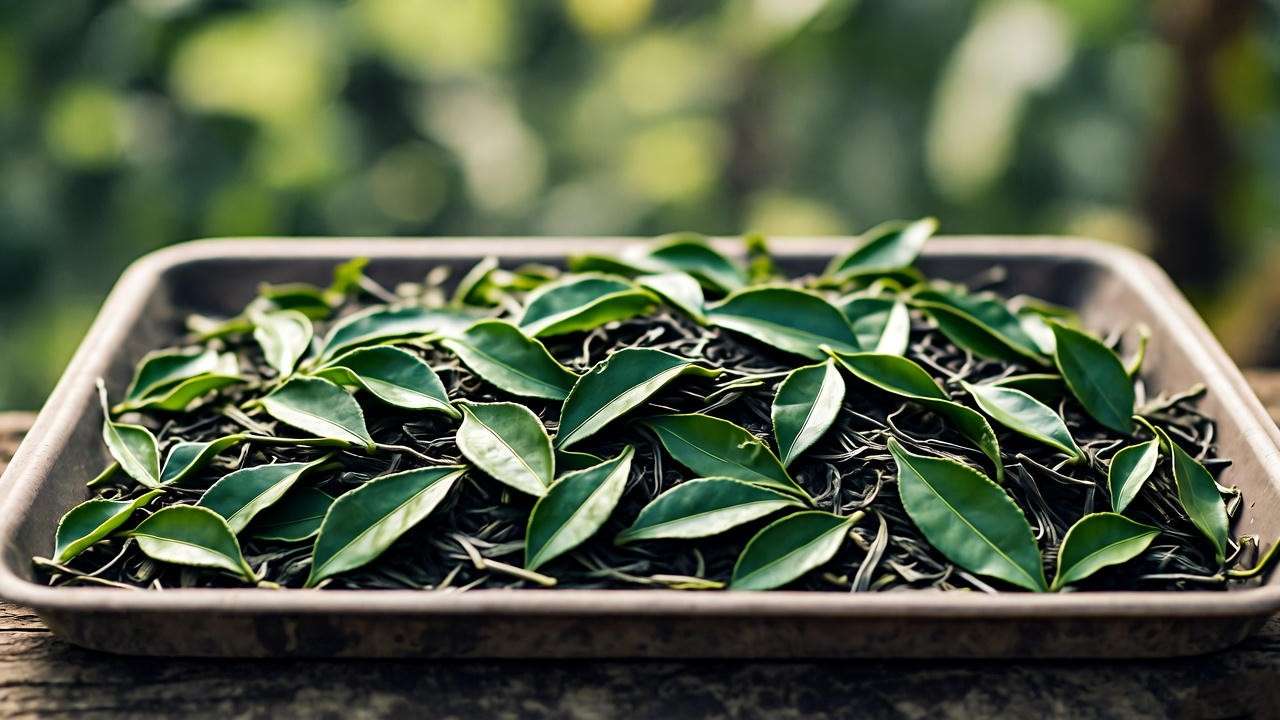
H2: Expert Tips for Long-Term Success with Tea Plant Seedlings 🌟
To ensure your tea plant seedlings thrive for years, incorporate these expert strategies:
- Mulch Annually: Apply a 2-inch layer of pine bark or wood chips each spring to maintain soil acidity and retain moisture.
- Use Rainwater: Tap water often contains chlorine or alkaline minerals that can harm tea plants. Collect rainwater or use distilled water for watering.
- Rotate Indoor Plants: Turn potted tea plants every 1–2 weeks to ensure even light exposure and prevent lopsided growth.
- Expert Insight: A tea cultivation specialist from Assam recommends checking soil pH every 6 months and adjusting with organic amendments to maintain optimal acidity. For those scaling up, consider planting multiple seedlings 3–4 feet apart to create a small tea garden, increasing yield over time.
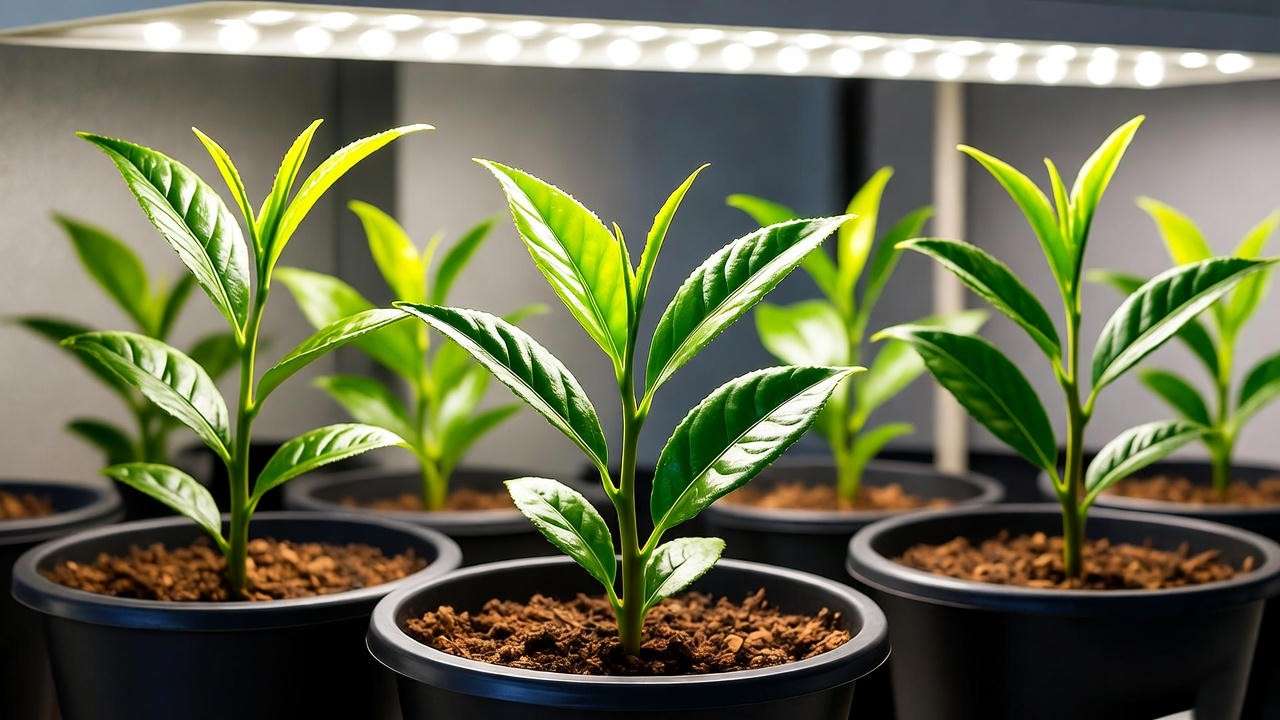
H2: Frequently Asked Questions (FAQs) ❓
Q1: How long does it take for tea plant seedlings to produce harvestable leaves?
A: Tea plant seedlings typically take 2–3 years to mature enough for harvesting. Regular care, including proper light and nutrients, speeds up this process.
Q2: Can tea plants grow indoors year-round?
A: Yes, with adequate light (grow lights or a sunny window), consistent humidity (50–60%), and acidic soil, tea plants thrive indoors year-round.
Q3: What’s the best soil mix for tea plant seedlings?
A: Combine 50% peat moss, 30% perlite, and 20% compost for a well-draining, acidic mix. Test pH to ensure it stays between 4.5–6.0.
Q4: How do I protect tea seedlings from frost?
A: In colder climates, cover outdoor seedlings with frost cloth or move potted plants indoors during winter. Maintain temperatures above 20°F.
Q5: Are tea plants high-maintenance compared to other plants?
A: Tea plants are moderately low-maintenance once established, requiring consistent moisture, acidic soil, and occasional pruning, similar to azaleas or camellias.
H2: Conclusion: Your Journey to Growing Tea at Home Starts Now! 🚀
Growing healthy tea plant seedlings is a fulfilling journey that combines horticultural skill with the joy of crafting your own tea. From selecting quality Camellia sinensis seedlings to planting, nurturing, and harvesting, this guide has equipped you with expert tips to succeed. Whether you’re cultivating a single potted plant or dreaming of a backyard tea garden, the key is patience and attention to your plants’ needs—light, acidic soil, and proper care. Start today by sourcing quality seedlings and following these steps to enjoy homegrown tea in just a few years. Share your progress in the comments, and let’s grow a tea-loving community! 🌱
For a handy reference, download our free Tea Plant Care Checklist [link to internal resource] to keep your seedlings thriving. Happy growing, and may your tea plants bring you years of lush leaves and delicious brews! 🍵

